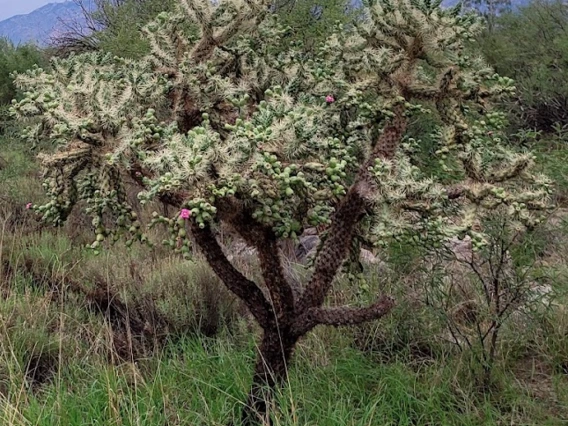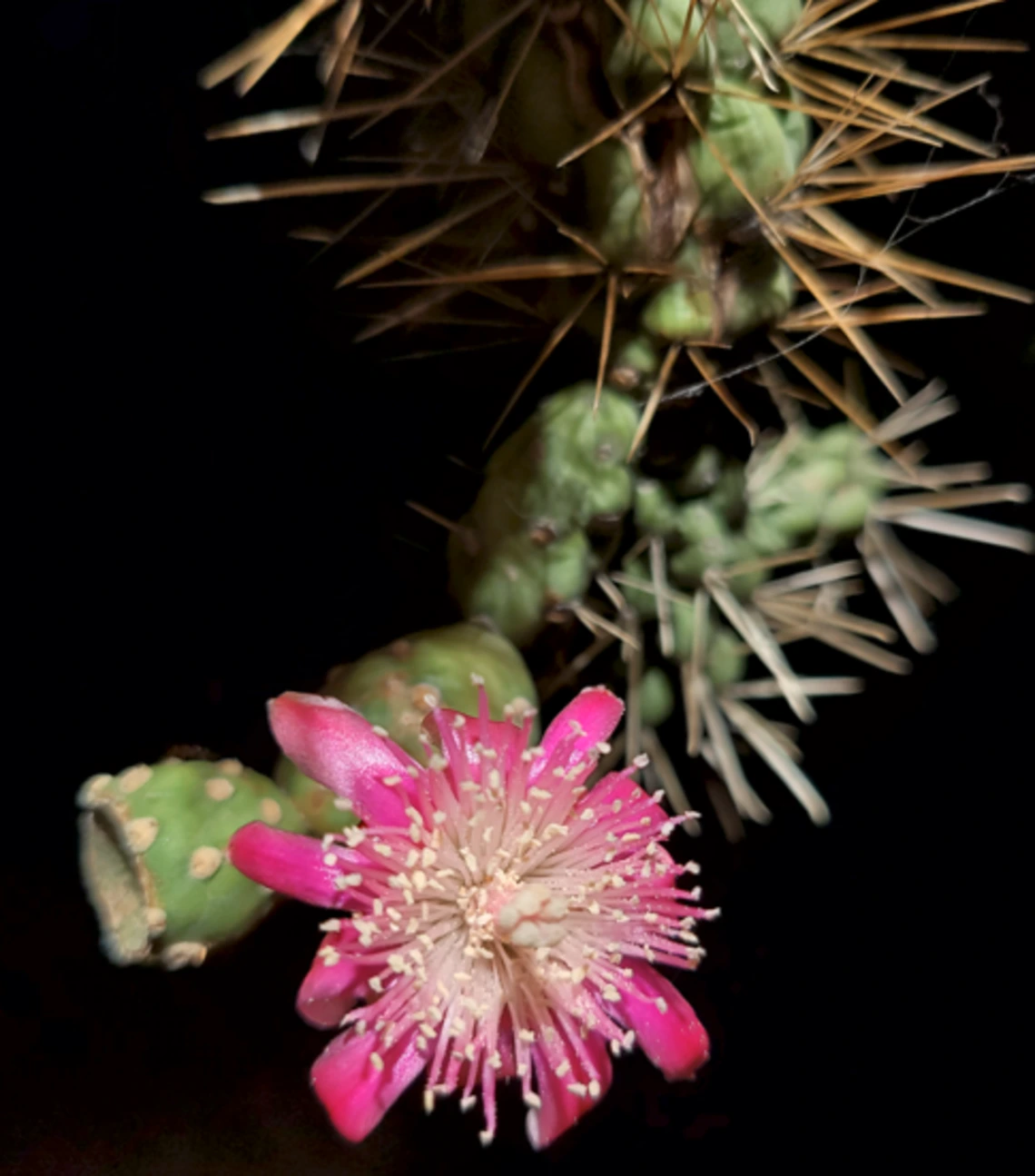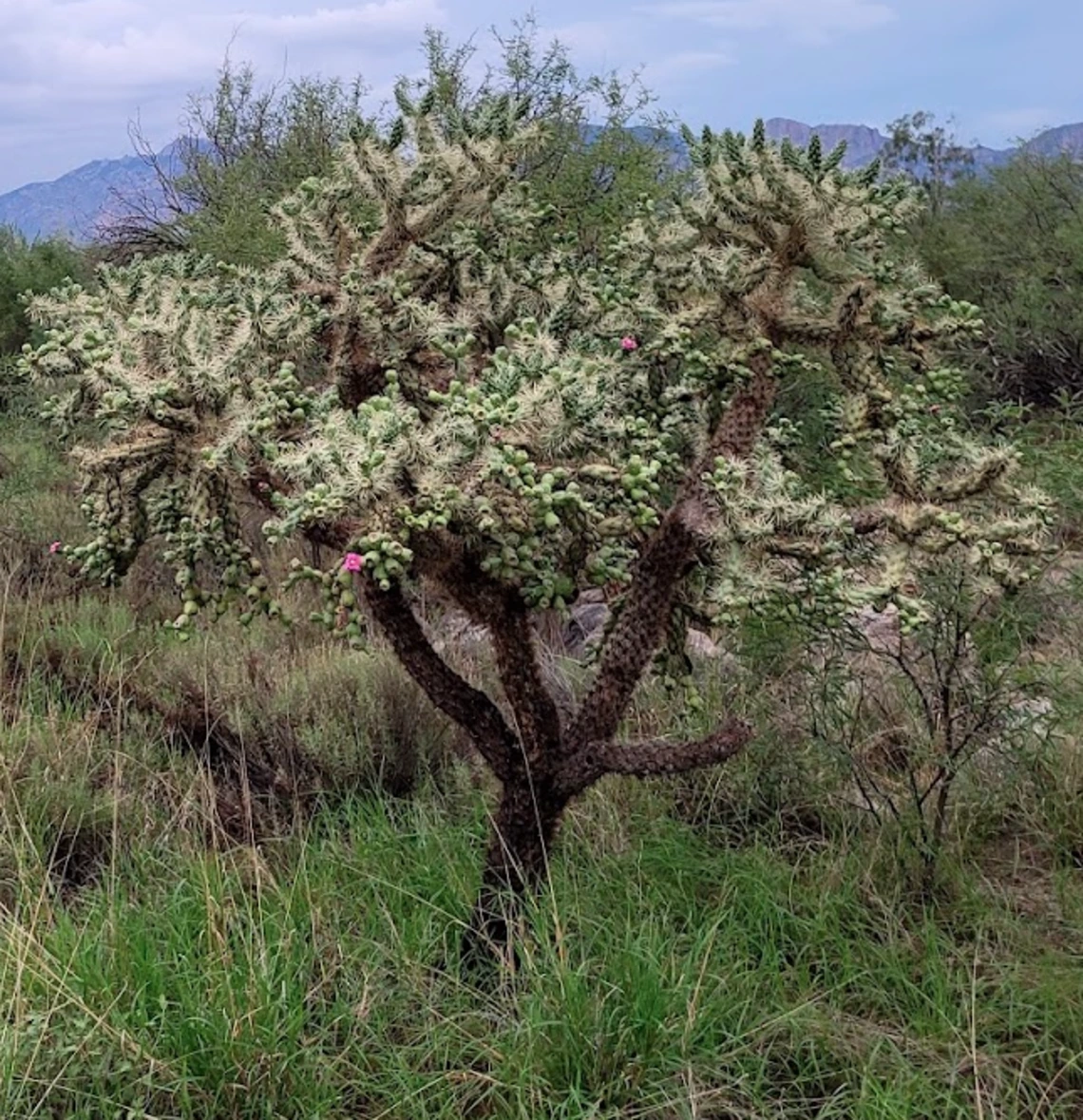Family: Cactaceae
Compound: Cyl ful
Synonyms: Opuntia fulgida
Geographic Origin: southwestern US, northeastern MX
Characteristics: A tall tree-like cactus that can grow up to 3m (10ft) in height. It features cylindrical, fleshy stems with pronounced tubercles each with a cluster of white to yellow spines. These spines provide shade for the plant and protection from herbivory. The green to blue-green stems can turn red to purple when sun stressed. The stems are segmented and can be up to 3.8cm (1.5in) in diameter. The fruit of the cholla is distinctive, hanging in long, drooping chains that may remain on the plant for years, hence its common name. The flowers are vibrant pink and up to 5cm (2in) in diameter, typically appearing in late spring to early summer.
Natural History: Found between 152-1219m (500-4,000ft) in flats, bajadas, rocky slopes, and low hills plains where it serves as a crucial habitat for wildlife like cactus wrens which build their nests in the protective arms of the plant.
Cultivation Notes: Chain-fruit cholla thrives in arid environments and requires minimal maintenance. It prefers full sun, tolerating poor soil conditions and drought. This cactus is typically propagated from stem cuttings, which root easily. Care should be taken to avoid the spines, which reportedly cause bruising in some people. Handle cuttings with gloves or tongs.
For general cactus and succulent propagation information, click here
Ethnobotany: Flower buds and young stems can be baked and eaten. The wood skeleton of old cholla is often used in crafts and as a building material. It is also planted as a natural fencing due to its dense and spiny structure.
Citations:
American Southwest. Retrieved April 29, 2024.
Southwest Desert Flora. Retrieved April 29, 2024.
SEINet Arizona – New Mexico Chapter. Retrieved April 29, 2024.





